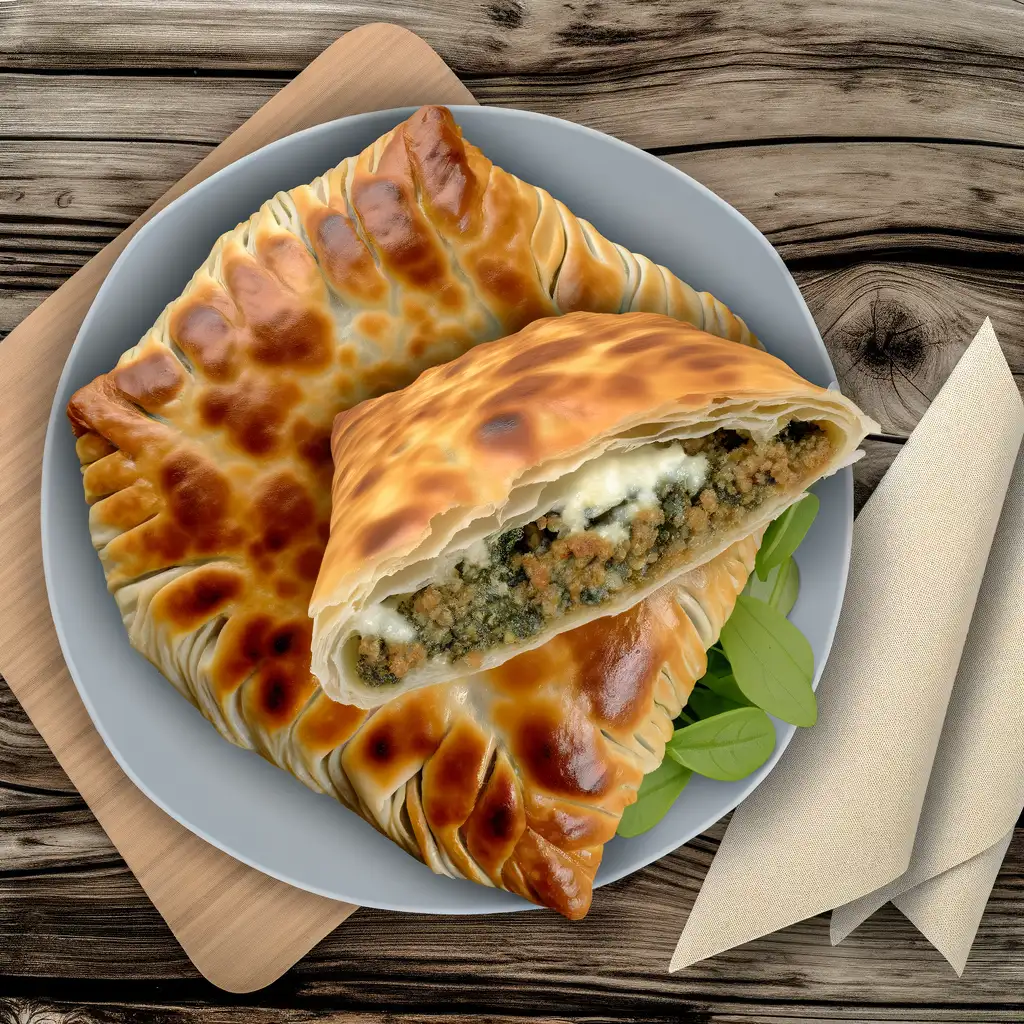



If you ever find yourself craving a place where history hums softly beneath the buzz of everyday life,Osijek is that kind of city. It’s got this laid-back,unpretentious vibe that instantly makes you feel at home,like you’ve stumbled upon a local secret without even trying. Walking along the Drava River,you’ll catch the gentle rustle of leaves mingling with the distant chatter from cozy cafés spilling onto cobblestone streets. The air carries a faint,earthy scent of fresh bread and roasted coffee,inviting you to slow down and savor the moment. Osijek’s charm lies in its blend of old and new — baroque buildings stand proudly beside vibrant street art,and the lively farmers’ market bursts with colors and aromas of fresh fruit,homemade cheeses,and smoked meats. The city’s heart beats strongest in its people,warm and welcoming,always ready to share a story or recommend a local dish like fiš paprikaš,a rich fish stew that tastes like the river itself. What really sets Osijek apart is its rhythm — a gentle pulse that invites you to explore without rush. Whether you’re cycling through the lush Kopački Rit nature park or lingering over a glass of plum brandy in a sunlit square,there’s a sense of discovery in every corner. It’s a place where you don’t just visit; you settle in,breathe deep,and let the city’s quiet magic work its way into your soul.
The information on this page is currently being reviewed by Tripkliq and should be used as a guide only
Eng word: Hello
Eng pronunciation: Bohk
Local language: Bok
Eng word: Goodbye
Eng pronunciation: Doh-vee-jen-ya
Local language: Doviđenja
Eng word: Thank you
Eng pronunciation: Hvah-lah
Local language: Hvala
Eng word: How much
Eng pronunciation: Koh-lee-koh
Local language: Koliko
Eng word: Toilet
Eng pronunciation: Toh-ah-let
Local language: Toalet
Eng word: Help me
Eng pronunciation: Poh-moh-zee mee
Local language: Pomozi mi
Eng word: Yes
Eng pronunciation: Dah
Local language: Da
Eng word: No
Eng pronunciation: Neh
Local language: Ne
Eng word: Excuse me
Eng pronunciation: Oh-proh-stee-teh
Local language: Oprostite
Osijek was originally known as Mursa during the Roman Empire. It was an important military and trade center, with remnants of Roman architecture still visible today.
The Croatian National Theater in Osijek, established in 1907, is the oldest theater in Croatia. It continues to be a cultural hub, hosting numerous performances and events.
Tvrđa is a well-preserved Baroque fortress in Osijek, built in the 18th century. It is a historical and cultural landmark, featuring cobblestone streets, museums, and galleries.
The Drava River, which flows through Osijek, has been a vital waterway for trade and transportation since ancient times. Today, it offers scenic views and recreational activities.
This stunning Neo-Gothic church, completed in 1898, is one of the tallest buildings in Croatia. Its impressive architecture and beautiful stained glass windows attract many visitors.
Osijek boasts the oldest tram system in Croatia, operational since 1884. It remains a popular and efficient mode of transportation for both locals and tourists.
The Promenade along the Drava River is a favorite spot for locals and tourists alike. It offers beautiful views, walking paths, and numerous cafes and restaurants.
Founded in 1877, the Museum of Slavonia is one of the oldest museums in Croatia. It houses extensive collections of artifacts, showcasing the rich history and culture of the region.
European Avenue is a historic street in Osijek, lined with beautiful Art Nouveau buildings. It is a testament to the city's architectural heritage and charm.
In Osijek, the most common Power Adaptor is Type C, Type F.



Cabbage rolls stuffed with minced meat and rice, cooked in a tomato sauce, commonly enjoyed during winter months.

A spicy, cured sausage made from minced pork, paprika, and garlic, often served sliced as an appetizer.

A savory pastry filled with minced meat, cheese, or vegetables, wrapped in thin layers of dough and baked until crispy.

A traditional fish stew made with freshwater fish, paprika, and various spices, often served with bread or polenta.

A type of flatbread that is often served as a side dish, sometimes topped with cheese or herbs.

A hearty meat stew typically made with a mix of meats, such as pork, beef, and game, cooked slowly with paprika and other spices.

A bean stew that can be made with various types of beans, often flavored with smoked meat and spices.
If you ever find yourself wandering through Split,it’s like stepping into a living,breathing storybook where ancient history and vibrant modern life dance together effortlessly. The moment you stroll along the Riva promenade,the salty breeze from the Adriatic mingles with the aroma of fresh espresso and grilled seafood wafting from nearby cafés. Locals chat animatedly in the sun-dappled squares,their laughter blending with the distant hum of boats bobbing gently in the harbor. There’s a laid-back energy here that feels both timeless and alive,inviting you to slow down and soak it all in.
Split’s heart beats strongest in Diocletian’s Palace,a sprawling Roman fortress that’s less a museum and more a neighborhood where people live,shop,and gather. Walking through its ancient stone alleys,you’ll catch glimpses of colorful markets,artisan shops,and cozy taverns tucked into centuries-old walls. At night,the city transforms as lanterns flicker on,and the sound of live klapa singing—traditional a cappella harmonies—drifts through the air,wrapping you in a warm,soulful embrace.
What really makes Split unforgettable is how effortlessly it blends the old with the new. You can savor a plate of fresh octopus salad while watching fishermen haul in their catch,then wander to a rooftop bar for a cocktail as the sun sets behind the islands. It’s a place where every corner tells a story,every meal feels like a celebration,and every moment invites you to become part of its ongoing tale.
If you ever find yourself wandering through the sun-drenched streets of Dubrovnik,you’ll immediately feel like you’ve stepped into a living storybook. The city’s ancient stone walls rise proudly against the sparkling Adriatic,and as you stroll along the marble-paved Stradun,the salty sea breeze mingles with the scent of fresh pine and blooming bougainvillea. There’s a rhythm here—a gentle hum of life where history and modern charm dance together effortlessly.
Dubrovnik’s character is woven into every corner:the clatter of café cups,the murmur of locals chatting in cozy taverns,and the distant call of seagulls overhead. You can almost taste the city in the air—briny and fresh,with hints of grilled seafood and ripe figs from the markets. Sitting at a seaside restaurant,watching the sun dip behind the fortress walls,you’ll savor dishes bursting with Mediterranean flavors,paired with a glass of crisp Croatian white wine.
What makes Dubrovnik truly special is how it balances its rich past with a vibrant present. The city’s narrow alleys invite exploration,revealing tucked-away galleries,artisan shops,and lively squares where music spills out into the streets. Whether you’re tracing the footsteps of ancient mariners or simply soaking up the golden light on a quiet terrace,Dubrovnik feels like a warm embrace—inviting,timeless,and utterly unforgettable.
If you ever find yourself wandering the Dalmatian coast,Zadar is one of those places that sneaks up on you with its quiet charm and unexpected magic. The moment you step onto its ancient stone streets,there’s this warm,timeless feeling—like the city is gently humming a tune just for you. The salty breeze from the Adriatic mingles with the scent of fresh pine and blooming jasmine,wrapping around you as you stroll along the waterfront. It’s a place where history isn’t just in museums; it’s alive in the crumbling Roman ruins,the medieval churches,and the lively squares where locals gather to chat and sip coffee.
What really sets Zadar apart is its playful spirit. You’ll hear it in the waves as they dance through the Sea Organ,an extraordinary installation that turns the sea’s movement into haunting melodies. And just a few steps away,the Sun Salutation lights up the night with a mesmerizing display of colors,making the waterfront feel like a celebration of nature and art. Grab a seat on the stone benches,watch the sun dip below the horizon,and you’ll understand why Alfred Hitchcock once called Zadar the most beautiful sunset in the world.
The city’s vibe is relaxed but vibrant,with cozy konobas serving up fresh seafood and local wines that taste like the essence of the region. Whether you’re wandering through the bustling market,exploring narrow alleys,or simply soaking in the views from a café terrace,Zadar invites you to slow down,breathe deeply,and savor every moment.
If you ever find yourself wandering the sun-drenched coast of Croatia,Pula is the kind of place that wraps around you like a warm,familiar blanket. There’s this effortless charm in the air—ancient stone walls bathed in golden light,the salty breeze carrying the distant hum of boats and laughter from seaside cafes. Walking through Pula feels like stepping into a living history book,but one that’s vibrantly alive with locals chatting over espresso and the clinking of glasses filled with crisp,local wine.
The city’s Roman amphitheater is impossible to miss,standing proudly as a testament to centuries past,yet it pulses with modern energy during summer concerts and festivals. Strolling through the narrow streets,you’ll catch the scent of fresh seafood grilling nearby,mingling with the earthy aroma of pine trees from the surrounding hills. It’s a place where time slows just enough for you to savor a plate of black risotto or sip on a cold craft beer while watching the sun dip into the Adriatic.
What really makes Pula special is its blend of rugged coastal beauty and warm,unpretentious spirit. The locals have a relaxed vibe,welcoming you with genuine smiles and stories about their city’s layered past. Whether you’re exploring Roman ruins,lounging on a pebble beach,or simply people-watching in a bustling square,Pula invites you to soak in its rich culture and easygoing rhythm. It’s a city that stays with you long after you’ve left,whispering tales of history,sea,and sun.
If you wander into Šibenik,you’ll immediately feel like you’ve stepped into a place where history and the sea have been quietly chatting for centuries. The city’s old stone streets,worn smooth by footsteps over hundreds of years,invite you to slow down and soak in the atmosphere. There’s a gentle hum of life here—fishermen unloading their catch,the clinking of glasses from cozy waterfront cafés,and the distant call of seagulls mingling with the soft splash of waves against the harbor walls.
What makes Šibenik truly special is its blend of rugged Adriatic charm and rich cultural layers. The sun warms the limestone walls,making them glow golden in the late afternoon,while the scent of pine trees drifts in from the nearby hills. You can’t miss the stunning Cathedral of St. James,a masterpiece carved entirely from stone,where every detail tells a story. Wander through the narrow alleys,and you’ll find vibrant markets bursting with fresh figs,olives,and local cheeses that taste like sunshine.
Evenings in Šibenik have a relaxed,almost magical feel. The city lights flicker on,reflecting in the calm waters,and the air fills with the aroma of grilled seafood and herbs. Locals gather in lively taverns,sharing laughter and stories over glasses of crisp Croatian wine. It’s a place where time slows just enough for you to savor the simple pleasures—good food,warm smiles,and the endless blue horizon.
If you wander into Rijeka,you’ll immediately feel its pulse—a lively,salty breeze mingling with the hum of a bustling port city that’s unapologetically itself. It’s not polished like some of Croatia’s more famous coastal towns,but that’s exactly what makes it so magnetic. The streets buzz with a mix of locals chatting over coffee,the clatter of trams,and the occasional distant call of seagulls. You can almost taste the sea in the air,a briny freshness that pairs perfectly with a glass of local Malvazija wine at a cozy café.
Rijeka wears its history on its sleeve,from the grand Austro-Hungarian architecture to the colorful street art that pops up in unexpected corners. The city’s character is a blend of old-world charm and modern creativity,with a vibrant arts scene that spills into its festivals and galleries. Strolling along the waterfront,you’ll catch fishermen unloading their catch,the scent of grilled fish wafting from nearby taverns,and the laughter of families enjoying the evening.
What really sticks with you is Rijeka’s warmth—people here are genuine,proud of their city’s quirks and stories. Whether you’re exploring the lively market,climbing up to Trsat Castle for sweeping views,or simply soaking in the rhythm of the harbor,Rijeka invites you to slow down and savor its unique blend of sea,culture,and everyday life. It’s a place that feels like a well-kept secret,but one you’ll want to shout about once you’ve been.
Tourists booking accommodations online may encounter fake listings or substandard properties that do not match the advertised descriptions.
Tourists may encounter currency exchange offices offering attractive rates, but hidden fees or unfavorable exchange rates are applied, leaving visitors with less money than expected.
Tourists may be sold counterfeit or low-quality souvenirs at inflated prices, especially in markets or near tourist attractions.
Unlicensed individuals may offer guided tours, providing little value or incorrect information while charging high fees.
Some taxi drivers may overcharge tourists by not using the meter, taking longer routes, or quoting inflated flat rates for short distances.
In crowded areas or public transport, pickpockets may target tourists by distracting them or taking advantage of their lack of awareness.
Unsuspecting tourists might find extra items or inflated prices added to their restaurant bills, especially in tourist-heavy areas.
Scammers may pose as charity workers or monks, asking for donations for fake causes and pressuring tourists to give money.
The possession, use, and distribution of illegal drugs are strictly prohibited in Osijek, Croatia. Penalties for drug-related offenses can be severe, including hefty fines and imprisonment. The use of recreational drugs is not tolerated, and tourists should be aware that law enforcement takes drug offenses very seriously.
In Osijek, Croatia, smoking is prohibited in all enclosed public spaces, including restaurants, bars, and public transportation. However, some establishments may have designated smoking areas. Smoking is also banned in certain outdoor areas, such as playgrounds and sports facilities. Violations can result in fines.
Vaping is subject to similar regulations as smoking in Osijek. It is prohibited in enclosed public spaces and certain outdoor areas. Some establishments may allow vaping in designated areas. Tourists should look for signs indicating whether vaping is permitted.
What are other people saying about Osijek?
Recent Social posts about Osijek
There is nothing to show you for now.